 Our thanks to Mike Fishbein for this guest contribution. This article was originally published at mfishbein.com and we thought it would definitely resonate with many of our authors!
Our thanks to Mike Fishbein for this guest contribution. This article was originally published at mfishbein.com and we thought it would definitely resonate with many of our authors!
Would you order “fried crap” off a restaurant menu?
I was catching up with my friend the other day. He just got back from a huge trip to South East Asia and he was telling me about his adventures, the parties, and the delicious food.
“One day I was walking down the street and a restaurant smelled so good I had to go inside. They handed me a menu, and what do I see in big bolded letters on the first page? “Fried Crap!”. I didn’t eat there.”
Fried Crap!?
We shared a chuckle. Turns out it’s not so uncommon for people in Cambodia to confuse ‘B’ and ‘P’, so the fried crab on the menu lost its appeal.
So, what’s this got to do with an Amazon book description? Everything, actually.
Books are just like restaurants. But instead of food, people consume content.
As an author, it’s your job to make sure your readers get excited about your book. You need to set the stage properly that triggers their emotions, leaving them eager to buy and start reading.
See, sometimes people are going to buy your book without thinking much. Sometimes they’re just going to stumble upon your book randomly and want to try it out, just like my friend and the Cambodian restaurant.
But instead of glancing at a menu, what do potential customers look at? What’s the last step before they make a decision? Your book description.
Now, I’ll be honest. Until summer 2015, I didn’t pay much attention to my Amazon book descriptions. I just provided a quick summary, copied and pasted something from my conclusion, and called it a day. Amazon descriptions can be up to 4,000 characters (usually around 600-700 words), and I kept mine under 2,000 characters.
Then, I realized my mediocre Amazon descriptions probably weren’t helping my book sales, rather they were hurting them. In late October 2015, one of my books became a #1 best seller. I doubt that ever could have happened with a lousy description…
Your Amazon book description is your last chance to make the sale. It’s an opportunity to force the reader to think, “I need this book right now.”
So, how do you do that?
1. Don’t Make It About Yourself
You don’t need to include how many awards you’ve won and why you’re awesome. Instead, make it about the reader. What are they going to learn from your book? Why is it going to be worth their time and money?
2. Be Exciting
A boring description will make the reader believe the book (and probably the author) is boring. Enough said. Your description should be lively and fun to read. If you’re not getting the reader pumped to read your book, then it’s not exciting enough.
For example, if your book is about weight loss, then your description should be getting the reader excited to lose weight. You can get them excited by laying out how great they’re going to feel when they reach their weight loss goals. Another great way to do this is to…
3. Paint a Picture with Benefits
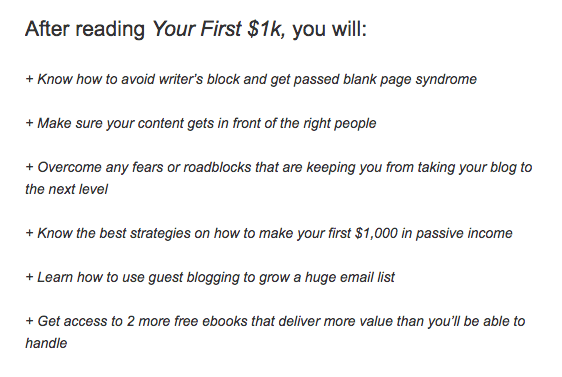
Don’t just talk about what’s inside the book and what problems your readers face, take it a step further and show the readers what life will be like once they follow your advice. Make sure to be honest, though.
For example, in my book, “Guest Blogging Masterclass,” instead of saying, “You will learn how to get more guest blog posts,” I say, “You’ll be able to grow your blog and generate massive traffic through guest blogging.”
4. Target Keywords

If people aren’t searching for the keywords, then no one is going to find it. Do some keyword research and see what people are searching for, both on Amazon and Google. Then include those keywords in the descriptions. Having keywords that people are searching for can actually increase your chances of being found. Just make sure that when they do find you they are not turned off by your keyword stuffing instead of an inspiring description.
5. Start Strong
Screw up the first line and you’ve lost the reader and perhaps a potential customer. The first line is your first impression. It needs to draw people in and pique their interest. A good first line should be short and easy to read. A lot of successful Amazon sellers start with a question that resonates with the reader. For example, in my book, “How to Find Time to Write” I start with a few questions that resonate with my target audience (see screenshot below).
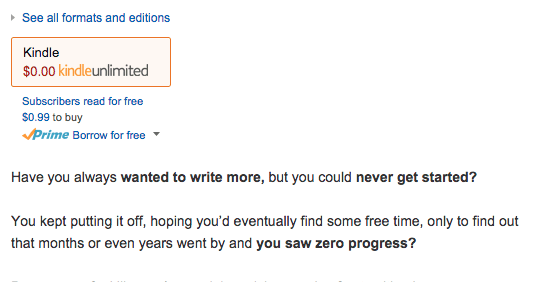
Another great way to start is by including a solid value proposition of what the customer can expect after reading the book. The example below demonstrates that, it explains in the first line that the reader will “master the fundamentals, hone your business instincts, and save a fortune in tuition.”
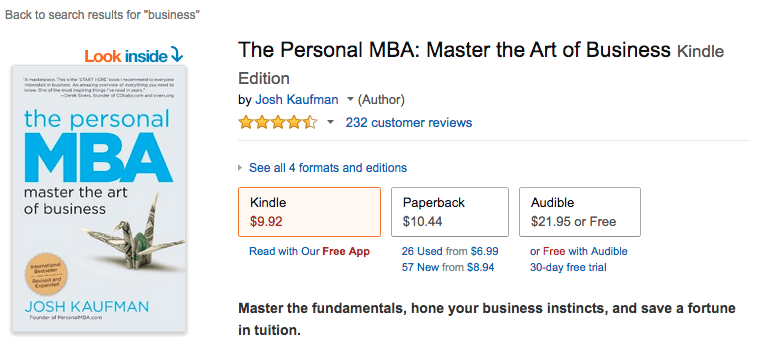
6. Write Sales Copy
“But it’s a description, not a sales pitch!”
Your book is a product and you are trying to sell it. This calls for sales copy. True, it may cost only 99 cents, but you still have to convince the reader that it’s worth it.
Your description should not be a summary or a bio, it’s a sales page. If you’re not confident writing sales copy, then hire someone to do it for you. It’s not cheap, but the ROI is worth it.
7. Write The Problems in the Language of Your Readers
If you can define your readers problem better than they can, they’re going to trust that you have the best solution. Your goal here is for people to read your description and think, “Wow, that’s me! How can this guy/girl read my mind?!”
8. Enhance the Style
Add effects to your description by adding bold, italics, underlines, UPPER CASE, and different sized titles. Not only does this make it more interesting and allow you to display more emotion, but it also makes it easier to capture the attention of someone who is browsing quickly and not reading it word for word. See an example below:

9. Make it clear
If the reader can’t tell exactly what the book is about by the description, there’s a small chance he/she is going to read it. Avoid being too fancy and make sure you stay on topic. Also make sure you include what the book is about and not just why people should buy it. See the example below for a weak Amazon description.
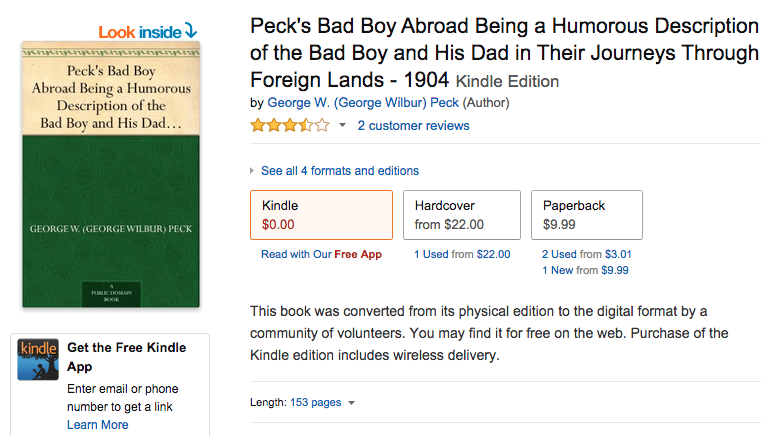
10. Proofread
Yeah, it’s a no brainer, but screw this up and you can kiss your potential sale goodbye. It may be best to hire a proofreader for this to look at it with fresh eyes. I recommend sites like Upwork to find affordable professionals.
11. Include a Call To Action
Imagine you’ve got a killer description that hooks the reader in but when they read until the end, because you’re missing a call to action, they browse around and look at reviews and end up getting distracted. That’s a missed opportunity of a sale.
The most effective way to include a call to action is write something along the lines of, “now, scroll to the top of this page and buy the book and get started today.” Don’t think of it as being salesy, rather you’re just encouraging them to take action.

*Optional: Including testimonials. This can go both ways. On one note, a testimonial will rarely hurt you. On another note, it could screw up the flow of your copy.
Having testimonials is optional. It can be helpful but not all successful books on Amazon have them.
I’ve chosen not to include testimonials in mine because I don’t have any from people with credentials. But if Mark Cuban or James Altucher left me a 5 star review, you bet I’d include that in my description!
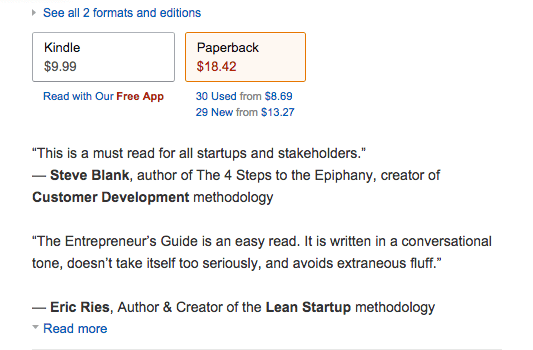
So, there you have it. The good news is now you know what you need to get more sales from your Amazon books. The bad news? It may take some time and extra effort. But it’s worth it.

I got excited when I read the header about composing better book descriptions. Disappointed when I got here. Should have read: 11 Tips to Craft the Perfect Non-Fiction Book Description.